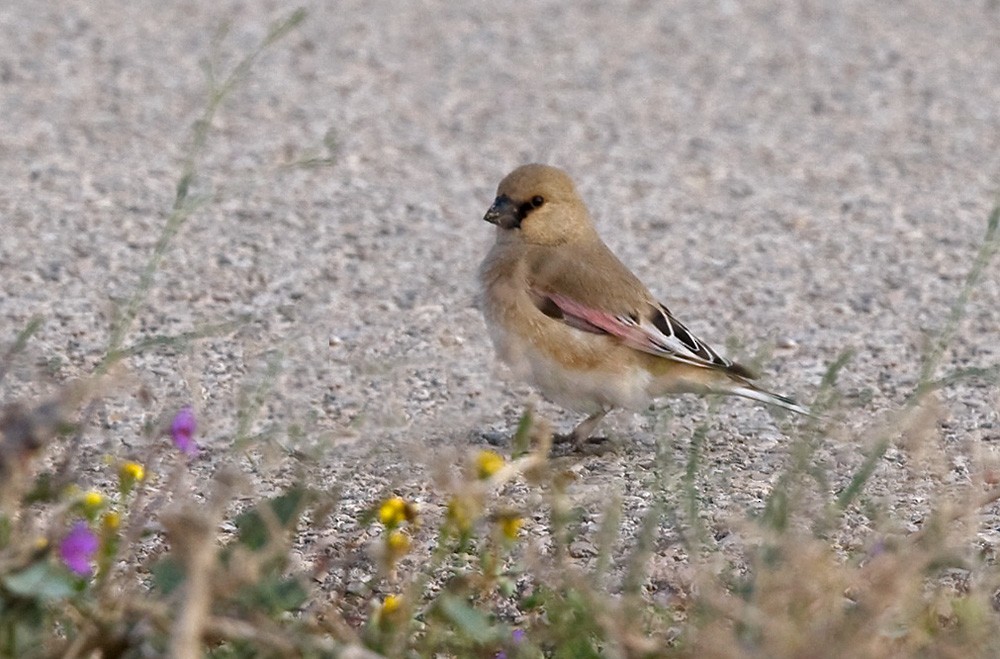Desert Finch
A species of Desert Finch Scientific name : Rhodospiza obsoleta Genus : Desert Finch
Desert Finch, A species of Desert Finch
Botanical name: Rhodospiza obsoleta
Genus: Desert Finch
Content
Description General Info
 Photo By Lars Petersson
Photo By Lars Petersson Description
The desert finch (Rhodospiza obsoleta), sometimes called Lichtenstein's desert finch, is a large brown true finch found in southern Eurasia. Its taxonomy is confused, and it has formerly been placed in Fringilla, Bucanetes, Carduelis and Rhodopechys. It has an average wingspan of 26 centimetres (10 in). It has a stout black bill, black and white remiges and rectrices, and a slash of rosy-pink on each wing. The female is more dull in color than the male, but other than that the adult sexes are similar in color pattern. The bird is indeed a desert resident in areas where water is readily available, but it can also be found in low mountains and foothills, and in cultivated valleys. It feeds on seeds and the occasional insect. Nesting occurs in trees in the spring, often in fruit trees in orchards, and the female lays and incubates 4 to 6 pale green, lightly speckled eggs. This species does not migrate except locally. The desert finch congregates near rural and remote human settlements, and the well-watered orchard in otherwise arid land is an ideal habitat. It can be found in feeding in large flocks of its own species or mixed finch flocks. Recent research by Zamora et al. (2006) has revealed that the desert finch is more closely related to the greenfinches of the genus Carduelis (or Chloris, if Carduelis is split up) as indicated by DNA sequence analysis, vocalizations, and the presence of a black eye-stripe. Genetically, it seems very close to the common ancestor of the greenfinches. It may be that the latter evolved from a desert form and later developed the green plumage, or that the common ancestor of the greenfinches and the desert finch (which lived around 6 million years ago) was a species of semiarid habitat which subsequently diverged into a truly desert-adapted lineage, today represented by the desert finch, and the ancestor of a woodlands lineage, the greenfinches. 
Size
15 cm
Nest Placement
Ground
Feeding Habits
Desert Finch consumes a diet primarily composed of various seeds, buds, shoots, and some insects, foraging on the ground or from vegetation. Feeding in pairs or flocks, desert Finch shows a preference for seeds from plants like elm and saltwort, and insects such as grasshoppers, with nestlings fed milky seed fluid and shoots.
Habitat
Desert Finch typically inhabits lowland and submontane regions characterized by dry, arid, and semi-arid environments. These birds are found in open plains, semi-deserts, wadis with minimal vegetation, and areas with low scrub and thickets. Desert Finch also resides in ecosystems supporting scattered trees, oases, saxaul stands, and plantations, as well as human-modified landscapes such as irrigated areas, orchards, vineyards, and urban green spaces like parks and roadside trees.
Dite type
Granivorous
General Info
Feeding Habits
Bird food type

 Photo By Lars Petersson
Photo By Lars Petersson Scientific Classification
Phylum
Chordates Class
Birds Order
Perching birds Family
Finches Genus
Desert Finch Species
Desert Finch